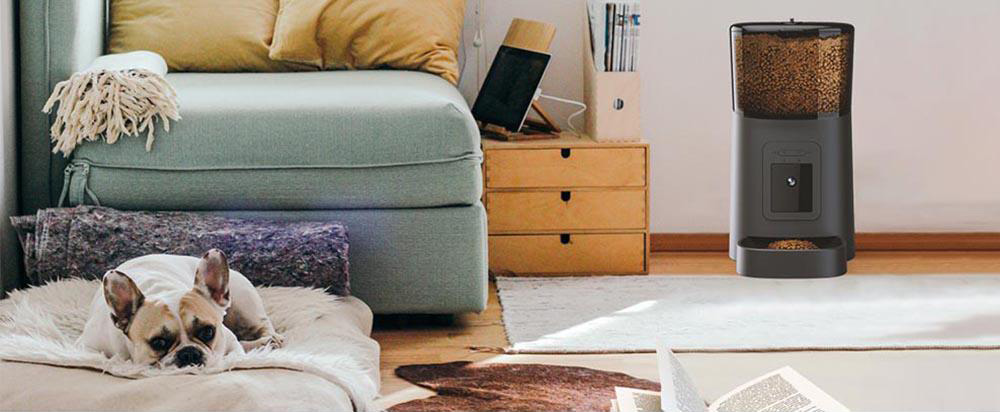Puppies can start using a puppy food dispenser after reaching a certain age. It is generally recommended to introduce a pet feeder to puppies once they are fully weaned, have started consuming solid food, and have developed good eating habits. The specific timing may vary depending on the breed, size, and individual development of the puppy.
1. Complete Weaning: Puppies are usually fully weaned and introduced to solid food at around 8 weeks of age. At this stage, their teeth and digestive system have developed enough to chew and digest solid food.
2. Eating Habits: During the weeks following weaning, puppies gradually develop their own eating habits and become accustomed to fixed feeding times and types of food. This is an important indicator for using a puppy food dispenser, as the puppy automatic feeder operates based on predetermined feeding schedules.
3. Size and Breed: Different breeds and sizes of puppies grow at different rates. Generally, smaller breeds tend to develop faster and may be ready to use a pet feeder at an earlier age, while larger breeds might require more time to adapt to solid food and scheduled feeding.
4. Chewing Ability: Using a puppy food dispenser requires the puppy to have a certain level of chewing ability to effectively digest the food. If the puppy is still very young and its teeth are not fully developed, it might be better to postpone the use of a puppy automatic feeder temporarily.

Pet care tips: puppies can typically start using a puppy automatic feeder after they are fully weaned, have started consuming solid food, and developed good eating habits. Before introducing a uppy food dispenser, pet owners should consult with a veterinarian or a pet nutrition specialist to ensure they choose the appropriate feeder and food to meet the puppy's health and nutritional needs. Typically, puppies are weaned at around 8 weeks of age, at which point their teeth and digestive system have developed enough to handle solid food. After weaning, puppies can gradually transition to eating dry kibble. Initially, you can soak the dry kibble in water or puppy milk to soften it and make it easier for them to chew and digest. As time goes on and their chewing and digestive abilities improve, you can gradually reduce the amount of water or milk added until they are eating dry kibble without any added moisture.
When we use a pet feeder to give our dogs dry food. There are a few things to keep in mind:
1. Choose the right dry kibble: Select high-quality dry kibble that is appropriate for your puppy's age, breed, and size to ensure they receive all the necessary nutrients.
2. Gradual transition: Mix the dry kibble gradually into your puppy's current food, increasing the proportion of dry kibble over time until they are fully transitioned.
3. Monitor their response: During the transition period, observe your puppy's appetite and digestion. If they experience any digestive issues or refuse to eat, you may need to adjust the transition speed.
4. Provide fresh water: Whether your puppy is eating wet food or dry kibble, make sure to provide fresh drinking water at all times.
When starting to use a puppy automatic feeder to feed your dog, we should keep the pet feeder hygienic. Regular cleaning of the pet feeder helps to provide a clean and hygienic environment for the dog to eat. Every now and then we can change a dog food for our dogs. However, it is important to note that there is a specific method to change the dog food and it cannot be replaced directly. For the specific method, you can refer to this article - “ Can Dogs Eat Only Dog Food For A Long Time?”.





